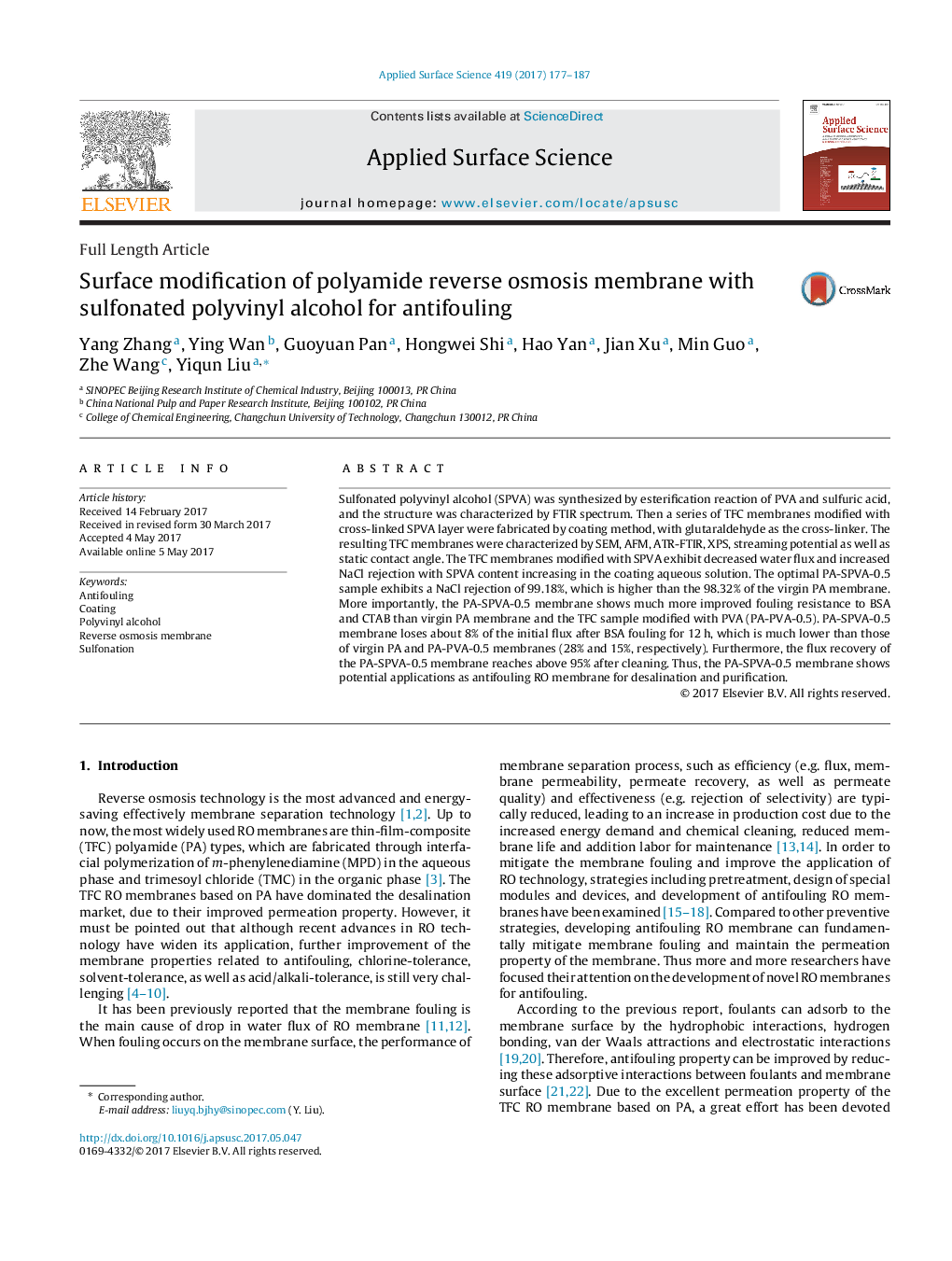| Article ID | Journal | Published Year | Pages | File Type |
|---|---|---|---|---|
| 5346883 | Applied Surface Science | 2017 | 11 Pages |
Abstract
Sulfonated polyvinyl alcohol (SPVA) was synthesized by esterification reaction of PVA and sulfuric acid, and the structure was characterized by FTIR spectrum. Then a series of TFC membranes modified with cross-linked SPVA layer were fabricated by coating method, with glutaraldehyde as the cross-linker. The resulting TFC membranes were characterized by SEM, AFM, ATR-FTIR, XPS, streaming potential as well as static contact angle. The TFC membranes modified with SPVA exhibit decreased water flux and increased NaCl rejection with SPVA content increasing in the coating aqueous solution. The optimal PA-SPVA-0.5 sample exhibits a NaCl rejection of 99.18%, which is higher than the 98.32% of the virgin PA membrane. More importantly, the PA-SPVA-0.5 membrane shows much more improved fouling resistance to BSA and CTAB than virgin PA membrane and the TFC sample modified with PVA (PA-PVA-0.5). PA-SPVA-0.5 membrane loses about 8% of the initial flux after BSA fouling for 12Â h, which is much lower than those of virgin PA and PA-PVA-0.5 membranes (28% and 15%, respectively). Furthermore, the flux recovery of the PA-SPVA-0.5 membrane reaches above 95% after cleaning. Thus, the PA-SPVA-0.5 membrane shows potential applications as antifouling RO membrane for desalination and purification.
Related Topics
Physical Sciences and Engineering
Chemistry
Physical and Theoretical Chemistry
Authors
Yang Zhang, Ying Wan, Guoyuan Pan, Hongwei Shi, Hao Yan, Jian Xu, Min Guo, Zhe Wang, Yiqun Liu,
